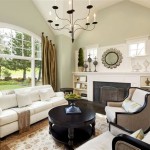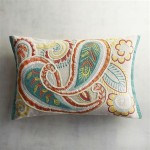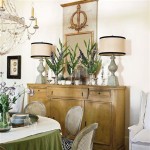How To Decorate Cathedral Ceilings
Cathedral ceilings, distinguished by their soaring heights and dramatic angles, present unique decorating challenges and opportunities. Their expansive nature can create a sense of grandeur and spaciousness, but if not properly addressed, they can also lead to feelings of coldness, emptiness, and visual imbalance. Successful cathedral ceiling decoration requires a thoughtful approach, taking into account scale, proportion, and the overall architectural style of the space.
The principles of interior design remain applicable, but their application may need to be adapted to account for the increased vertical dimension. Considerations should be given to how light is distributed, how the eye is drawn through the space, and how the decor contributes to a cohesive and inviting atmosphere. Ignoring the specific characteristics of a cathedral ceiling can result in a room that feels unfinished or simply out of scale.
Furthermore, accessibility can be a factor. Reaching high surfaces for painting, installing lighting, or hanging decor requires specialized equipment and may necessitate professional assistance. Planning and preparation are essential to ensure a safe and effective decorating process.
Addressing Scale and Proportion
Perhaps the most crucial aspect of decorating cathedral ceilings is understanding scale and proportion. Standard-sized furniture and décor can easily get lost in the vastness of the space, leading to an underwhelming and unbalanced aesthetic. The objective is to select pieces that are appropriately sized to fill the visual space without overwhelming the room or appearing dwarfed by the ceiling's height.
Large-scale artwork is an effective means of addressing the vertical space. A single, impactful piece or a carefully curated gallery wall can draw the eye upward and create a focal point. The art should be proportionate to the wall area, avoiding pieces that appear too small or insignificant. Consider the style of the artwork in relation to the overall decor. Abstract and contemporary pieces can complement the modern lines often found in homes with cathedral ceilings, while more traditional artwork can add warmth and character to a more rustic or classic setting.
Furniture selection should also prioritize scale. Opt for larger sofas, sectionals, and armchairs that can hold their own in the expansive room. Avoid choosing too many small, delicate pieces which could make the room feel cluttered and disproportionate. The layout of the furniture is also critical. Anchor the space with a large area rug to define the seating area and create a sense of cohesion. Consider the placement of furniture in relation to the natural light sources and the overall flow of the room.
Window treatments can significantly influence the perceived scale of the room. Long, flowing curtains that extend from near the ceiling to the floor can accentuate the height and create a sense of drama. Consider the fabric weight and color of the curtains. Lighter fabrics can allow more natural light to filter through, while heavier fabrics can provide privacy and insulation. The style of the curtains should complement the overall decor, whether it be minimalist, traditional, or eclectic.
Light fixtures are another crucial element in addressing scale. A single, small chandelier will likely be inadequate to illuminate the entire space effectively, and it will appear dwarfed by the ceiling. Choose a large, statement-making chandelier or pendant light that is proportionate to the room's dimensions. Consider the style of the light fixture in relation to the overall decor. A modern, sculptural chandelier can add a contemporary touch, while a traditional, ornate chandelier can create a more formal and elegant atmosphere. A combination of ambient, task, and accent lighting can create a well-lit and inviting space.
Architectural details can also be incorporated to break up the vastness of the ceiling and add visual interest. Beams, either decorative or structural, can add warmth and character to the room. The material and finish of the beams should complement the overall decor. Wooden beams can create a rustic or traditional look, while painted or metal beams can add a more modern touch. Consider the spacing and arrangement of the beams to create a balanced and visually appealing design.
Optimizing Lighting in High-Ceiling Environments
Lighting is a critical factor in decorating cathedral ceilings. Poor lighting can make even the most well-decorated space feel dark and uninviting. The height of the ceiling requires careful consideration of the types of light fixtures used, their placement, and their intensity. The goal is to create a well-lit space that is both functional and aesthetically pleasing.
Layering light is a key principle in illuminating cathedral ceilings. This involves combining different types of light fixtures to create a balanced and versatile lighting scheme. Ambient lighting provides overall illumination to the room, while task lighting provides focused light for specific activities, and accent lighting highlights architectural features or decor. A combination of these three types of lighting can create a comfortable and visually interesting space.
Chandeliers and pendant lights are often the focal point of lighting in cathedral ceilings. These fixtures can provide ample ambient lighting and add a touch of elegance or drama to the room. The size and style of the chandelier or pendant light should be proportionate to the room's dimensions and complement the overall decor. Consider the height of the ceiling when selecting a chandelier or pendant light. The fixture should be hung at a height that is both aesthetically pleasing and functional.
Recessed lighting can be used to provide ambient lighting and highlight specific areas of the room. These lights are discreet and can be used to create a clean and modern look. Consider the placement of recessed lights to avoid creating harsh shadows or glare. Dimmable recessed lights can provide flexibility and allow you to adjust the brightness of the room according to your needs.
Track lighting is another versatile option for illuminating cathedral ceilings. These lights can be adjusted to direct light where it is needed, making them ideal for highlighting artwork or architectural features. Track lighting can also be used to provide task lighting in areas such as kitchens or home offices. Consider the style of the track lighting in relation to the overall decor. Modern track lighting can add a contemporary touch, while traditional track lighting can create a more classic look.
Wall sconces can be used to add accent lighting and create a warm and inviting atmosphere. These lights can be placed on walls to highlight artwork or architectural features. Wall sconces can also be used to provide ambient lighting in smaller rooms. Consider the style of the wall sconces in relation to the overall decor. Modern wall sconces can add a contemporary touch, while traditional wall sconces can create a more formal and elegant atmosphere.
Natural light is an important factor to consider when planning your lighting scheme. Maximize the amount of natural light in the room by using sheer curtains or blinds that allow light to filter through. Reflective surfaces, such as mirrors and light-colored walls, can also help to brighten the room. Consider the orientation of the windows and the amount of sunlight they receive throughout the day when planning your lighting scheme.
Incorporating Color and Texture
Color and texture play a significant role in creating a visually appealing and comfortable space with cathedral ceilings. The vastness of the ceiling can affect the perceived color of the walls and the feel of the room. Careful selection of colors and textures can help to create a warm, inviting, and balanced atmosphere.
Light colors can help to brighten the room and make it feel more spacious. White, cream, and pale pastels are good choices for walls and ceilings in rooms with cathedral ceilings. These colors reflect light and can help to create a sense of airiness. However, too much white can make the room feel sterile and cold. Adding pops of color through furniture, artwork, and accessories can help to create visual interest and warmth.
Dark colors can be used to create a more dramatic and intimate atmosphere. Dark blues, greens, and grays can add depth and sophistication to a room. However, dark colors can also make the room feel smaller and more enclosed. It is important to use dark colors sparingly and to balance them with lighter colors. Consider using dark colors on accent walls or in smaller areas of the room.
Texture can add visual interest and depth to a room with cathedral ceilings. Using a variety of textures can help to create a more inviting and comfortable space. Consider incorporating textures through fabrics, furniture, and accessories. Rugs, throws, and pillows can add warmth and softness to the room. Wooden furniture can add a natural and rustic touch.
Wall treatments can also be used to add texture and visual interest. Textured paint, wallpaper, and paneling can all add depth and dimension to the walls. Consider using a textured paint to create a subtle and sophisticated look. Wallpaper with a bold pattern can add drama and personality to the room. Paneling can add warmth and character to the walls. Consider the style of the wall treatment in relation to the overall decor.
Accessories can also be used to add color and texture to the room. Vases, sculptures, and other decorative objects can add visual interest and personality to the space. Consider using accessories in a variety of colors, textures, and sizes to create a balanced and visually appealing display. Plants can add a touch of nature and freshness to the room. Consider using a variety of plants in different sizes and shapes to create a visually interesting display.
Furniture choices also influence the color and texture palette. Upholstered furniture can introduce a variety of colors and textures, depending on the fabric selected. Leather furniture can add a touch of luxury and sophistication, while linen furniture can create a more casual and relaxed atmosphere. Wooden furniture can add warmth and character to the room. Consider the style of the furniture in relation to the overall decor.
By carefully considering color and texture, it is possible to create a space with cathedral ceilings that is both visually appealing and comfortable. The key is to balance light and dark colors, incorporate a variety of textures, and choose furniture and accessories that complement the overall decor.

13 Unbeatable Vaulted Ceiling Ideas 2025 Checkatrade

Ideas How To Decorate A Room With Vaulted Cathedral Ceiling

Creative Ceiling Decorating Ideas

Vaulted Ceilings Ideas That Take Rooms To New Heights Architectural Digest

Vaulted Ceiling Design Ceilings Armstrong Residential
:max_bytes(150000):strip_icc()/Screenshot2023-02-15at11-10-44AVENIDAPALOSVERDESJennPabloStudio-5db5f43ca234497db86d81d6dea9b5b6.png?strip=all)
20 Cathedral Ceilings You Ll Want To Recreate At Home

75 Vaulted Ceiling Living Room Ideas You Ll Love May 2025 Houzz

13 Unbeatable Vaulted Ceiling Ideas 2025 Checkatrade

22 Vaulted Ceiling Ideas For An Open And Inviting Home Alittledelightful

55 Unique Cathedral And Vaulted Ceiling Designs In Living Rooms








